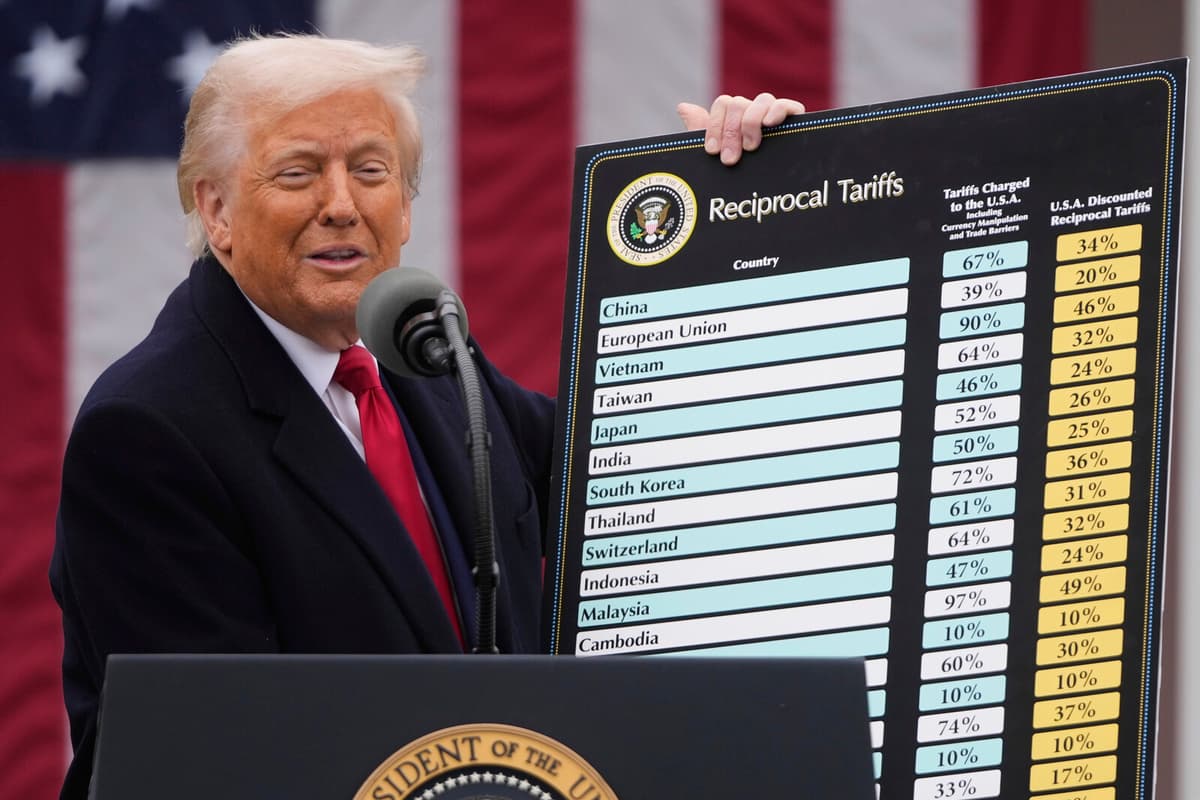Donald Trump wants to make imports more expensive or hinder them in order to prioritize domestic production instead. He has specifically pointed out the EU as "absolutely brutal" when it comes to trade with the USA.
In 2023, both the EU and the USA had tariffs averaging 2-3 percent against each other, according to calculations from the Swedish Trade Agency, the National Board of Trade.
They are similar, especially if you use a trade-weighted average. This means that you give greater weight to tariff positions where there is a lot of trade, says Altenberg.
The EU's general tariff level against all countries, including the USA, was 2.59 percent in 2023. They no longer have specific tariffs against the USA. For the USA's part, the general tariffs against the rest of the world averaged 2.46 percent.
However, we have protective measures on steel and aluminum. But they must also, according to the WTO's (World Trade Organization) rules, be directed against all countries.
Such tariffs are permitted if a country experiences a sudden large influx of a product that creates distortions in its own market. The tariffs on steel and aluminum have been raised by both the EU and the USA.
Not Unfair
When Trump announced the tariffs against the EU, he referred to traditional trade policy conflicts, for example, regarding rules for animal protection and food safety, where the EU has stricter requirements.
Have the EU or other countries had unfair tariffs - compared to the USA?
Not between the EU and the USA. It's an average of roughly the same level, says Altenberg.
This also applies to other OECD countries. For example, Canada's tariffs against the USA have been lower than vice versa. It's mainly developing countries that have had higher tariffs - against all countries. China also stands out.
Ongoing Trade War
They (the USA and China) have been engaged in a trade war since 2018, says Altenberg, adding that the tariffs between the countries have been around 20 percent since then.
The USA has, however, announced additional tariffs against China of 34 percent, and China has responded with an equally high tariff increase from Thursday.
In a tariff schedule, several products and percentage rates may vary. Therefore, it's better to look at the general tariff level than at specific products, according to Altenberg.
Almost every country has a sensitivity on certain products where they have high tariffs.
The EU also has such examples, mainly in the agricultural sector. But the USA also has that. So it's always possible to find examples that stand out when you want to make a point.
Tariff rates EU against the rest of the world, examples:
Ski boots: 17 percent
Cars: 10 percent
Men's cotton shirts: 12 percent
Tariff rates USA against the rest of the world (before April 5, 2025), examples:
Peanuts: 164 percent
Trucks: 25 percent
Men's cotton shirts: 20 percent
Source: National Board of Trade





